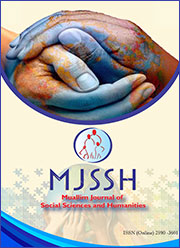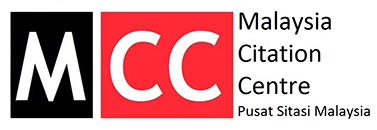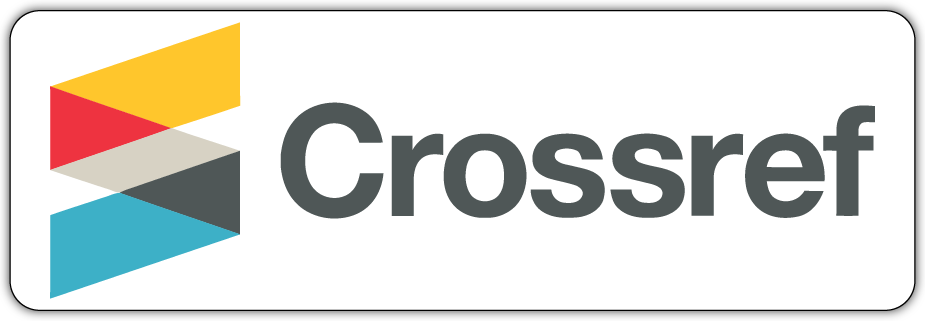Gender influences on learners’ willingness to communicate in English using computer mediated communication tool
Keywords:
Willingness to Communicate, English, Computer Mediated Communication Tool, Gender, ClassroomAbstract
Many Malaysian students struggle with English communication after 11 years of learning from primary school to secondary school. Despite extensive research, there is a gap in gender-based studies on learner's willingness to communicate (WTC) in Malaysian settings. Prior findings also reveal that early teens are getting actively engaged in digital communication in the current cyber age and those indications have derived the present study to investigate on the influence of gender and the effectiveness of CMC tool in fostering WTC in English. 224 secondary school students' WTC was measured using a survey to ascertain the influence of gender, and the effectiveness of the CMC tool in raising students' WTC in English was examined using a non-equivalent quasi-experimental study. The survey's Mann Whitney U-test results show male and female learners' WTC significantly differ from one another (U = 5171.5, p = 0.03). Analysis of mean rank reveals that female has higher WTC than male. While using the CMC tool, learners' WTC significantly differs from those who learn in a regular classroom setting (U = 605, p = 0.01), based on findings of a non-equivalent quasi experimental study. The analysis revealed that both genders were more likely to communicate in English and were more involved in their learning, partly due to their ability to express opinions verbally and through text, emoji, and other forms of communication. The study also showed that a person's WTC is influenced by their personality, and gender did influence willingness to communicate in English in the Malaysian context.
References
Akdemir, A. S. (2019). Age, gender, attitudes, and motivation as predictors of willingness to listen in L2. Advances in Language and Literary Studies, 10(4), 72-79. https://doi.org/10.7575/aiac.alls.v.10n.4p.72
Al-Amrani, S. N. (2021). Omani learners’ willingness to communicate in English: Can university learning management system help? SSRN. https://doi.org/10.2139/ssrn.3776377
Al-Amrani, S. N., & Harrington, M. (2020). The impact of online social presence on Omani female students’ willingness to communicate in English. Computer-Assisted Language Learning Electronic Journal, 21, 220-237.
Albooni, G. A., & Ishag, A. (2020). Perceived communication competence in willingness to communicate in English language (A case study of Sudanese EFL students).International Journal of Science and Research (IJSR), 9(1), 1882-1887.
Alemi, M., Tajeddin, Z., & Mesbah, Z. (2013, December 25). Willingness to communicate in L2 English: Impact of learner variables. Journal of Research in Applied Linguistics, 4(1), 43-62.
Alibakhshi, G., & Mohammadi, M. (2016). Synchronous and asynchronous multimedia and Iranian EFL learners’ learning of collocations. Applied Research on English Language, 5(2), 237-254.
Al-Murtadha, M. (2021). The relationships among self-reported and observed first language and second language willingness to communicate and academic achievement. Language, Culture and Curriculum, 34(1), 80-94.https://doi.org/10.1080/07908318.2020.1822518
Al-Rahmi, W. M., Alias, N., Othman, M. S., Marin, V. I., & Tur, G. (2018). A model of factors affecting learning performance through the use of social media in Malaysian higher education. Computers & Education, 121, 59-72.https://doi.org/10.1016/j.compedu.2018.02.003
Azman, H. (2016). Implementation and challenges of English language education reform in Malaysian primary schools. 3L: Language, Linguistics and Literature. The Southeast Asian Journal of English Language Studies, 16(1), 65-78.
Baker, S. C., & MacIntyre, P. D. (2000). The role of gender and immersion in communication and second language orientations. Language Learning, 50(2), 311-341. https://doi.org/10.1111/0023-8333.00118
Bashori, M., van Hout, R., Strik, H., & Cucchiarini, C. (2020). Web-based language learning and speaking anxiety. Computer Assisted Language Learning, 33(1-2), 1-32. https://doi.org/10.1080/09588221.2019.1598988
Blake, R. J. (2017). Technologies for teaching and learning L2 speaking. In The handbook of technology and second language teaching and learning (pp. 107-117). Wiley-Blackwell.
Bonvillian, W. B., & Susan, R. S. (2013). The online challenge to higher education. Issues in Science and Technology, 29(4), 63-69.
Buckingham, L., & Alpaslan, R. (2017). Promoting speaking proficiency and willingness to communicate in Turkish young learners of English through asynchronous computer-mediated practice. System, 68, 25-37. https://doi.org/10.1016/j.system.2017.06.003
Bursalı, N., & Öz, H. (2017, August 21). The relationship between Ideal L2 self and willingness to communicate inside the classroom. International Journal of Higher Education, 6(4), 229-239. https://doi.org/10.5430/ijhe.v6n4p229
Cheng, L., & Xu, J. (2022). Chinese English as a foreign language learners’ individual differences and their willingness to communicate. Frontiers in Psychology, 13, 1-10. https://doi.org/10.3389/fpsyg.2022.774678
D’Silva, V. (2019, October 19). Challenges in students' mastery of English. New Straits Times. https://www.nst.com.my/news/nation/2019/10/531486/challenges-students-mastery-english
Danial Dzulkifly. (2018, November 2). Employers blame poor communication, language skills for unemployed Bumi grads. Malay Mail.https://www.malaymail.com/news/malaysia/2018/11/08/employers-blame-poor-communication-language-skills-for-unemployed-bumi-grad/1691146
Dashtestani, R. (2018). Collaborative academic projects on social network sites to socialize EAP students into academic communities of practice. Teaching English with Technology, 18(2), 3-20.
Donovan, L., & MacIntyre, P. D. (2009). Age and sex differences in willingness to communicate, communication apprehension, and self‐perceived competence. Communication Research Reports, 21(4), 420-427. https://doi.org/10.1080/08824090409360006
Fatima, I., Ismail, S. M., Pathan, Z. H., & Memon, U. (2020). The power of openness to experience, extraversion, L2 self-confidence, and classroom environment in predicting L2 willingness to communicate. International Journal of Instruction, 13(3), 909-924.https://doi.org/10.29333/iji.2020.13360a
Freiermuth, M., & Jarrell, D. (2006). Willingness to communicate: Can online chat help? International Journal of Applied Linguistics, 16(2), 189-211. https://doi.org/10.1111/j.1473-4192.2006.00121.x
Heidari, F., & Moradian, N. (2021). The potentiality of synchronous video-based computer-mediated communication on EFL learners' inside and outside classroom willingness to communicate and intercultural competence. Journal of Foreign Language Research, 10(4), 734-751.
Henry, A., Thorsen, C., & MacIntyre, P. D. (2021). Willingness to communicate in a multilingual context: Part one, a time-serial study of developmental dynamics. Journal of Multilingual and Multicultural Development, 1-20.https://doi.org/10.1080/01434632.2021.1931248
Jantmary Thirusanku, & Yunus, M. (2014). Status of English in Malaysia. Asian Social Science, 10(14), 254-260. https://doi.org/10.5539/ass.v10n14p254
Karnchanachari, S. (2019). An investigation into learners’ willingness to communicate in English in the classroom: A study of Thai EFL students in the Thai and international programs. rEFLections, 26(2), 83-106.
Kashinathan, S., & Aziz, A. A. (2021). ESL learners’ challenges in speaking English in Malaysian classrooms. International Journal of Academic Research in Progressive Education and Development, 10(2), 983-991. https://doi.org/10.6007/IJARPED/v10-i2/10248
Kissau, S., McCullough, H., & Pyke, J. (2010). “Leveling the playing field:” The effects of online second language instruction on student willingness to communicate in French.CALICO Journal, 27(2), 277-297. https://doi.org/10.1558/cj.v27i2.277
Kolawole, A., & Sekumade, A. (n.d.). Hypotheses and hypothesis testing. PhD Seminar, 1-19. Ekiti State University.
Lahuerta, A. C. (2014). Factors affecting willingness to communicate in a Spanish university context. International Journal of English Studies (IJES), 14(2), 39-55.
Lai, A. (2022, January 1). English proficiency a must. The Star. https://www.thestar.com.my/news/nation/2022/01/01/english-proficiency-a-must
Lee, J. S., & Sylvén, L. K. (2021). The role of informal digital learning of English in Korean and Swedish EFL learners’ communication behaviour. British Journal of Educational Technology, 52(3), 1279–1296. https://doi.org/10.1111/bjet.13082
Li, Z., & Li, B. (2022). Individual differences and willingness to communicate in second language: The role of student age, gender, and socioeconomic status. Language Teaching Research Quarterly, 30, 18-31.
Lo, Y. Y. (2018). The ESL teachers’ willingness to communicate in English. Indonesian Journal of Applied Linguistics, 7(3), 594-603. https://doi.org/10.17509/ijal.v7i3.9809
MacIntyre, P. D., & Charos, C. (1996). Personality, attitudes, and affect as predictors of second language communication. Journal of Language and Social Psychology, 15(1), 3-26.
MacIntyre, P. D., & Wang, L. (2021). Willingness to communicate in the L2 about meaningful photos: Application of the pyramid model of WTC. Language Teaching Research, 25(6), 878-898. https://doi.org/10.1177/13621688211018731
MacIntyre, P. D., Baker, S. C., Clement, R., & Donovan, L. A. (2002). Sex and age effects on willingness to communicate, anxiety, perceived competence, and L2 motivation among junior high school French immersion students. Language Learning, 53(s1), 137-166. https://doi.org/10.1111/1467-9922.00226
MacIntyre, P. D., Dörnyei, Z., Clément, R., & Noels, K. A. (1998). Conceptualizing willingness to communicate in a L2: A situational model of L2 confidence and affiliation. The Modern Language Journal, 82(4), 545-562. https://www.jstor.org/stable/330224
Majid Zeinali Nejad, M., Golshan, M., & Naeim, A. (2021). The effect of synchronous and asynchronous computer-mediated communication (CMC) on learners’ pronunciation achievement. Cogent Psychology, 8(1), 1-18. https://doi.org/10.1080/23311908.2021.1872908
McCroskey, J. C., & Richmond, V. P. (1990). Willingness to communicate: A cognitive view Journal of Social Behavior and Personality, 5(2), 19-44.
Moghavvemi, S., Sulaiman, A., & Ismawati Jaafar, N. (2018). Social media as a complementary learning tool for teaching and learning: The case of YouTube. The International Journal of Management Education, 37-42.https://doi.org/10.1016/j.ijme.2017.12.001
Mohammad Amiryousefi. (2018). Willingness to communicate, interest, motives to communicate with the instructor, and L2 speaking: A focus on the role of age and gender. Innovation in Language Learning and Teaching, 12(3), 221-234. https://doi.org/10.1080/17501229.2016.1170838
Mori, S., & Gopel, P. (2005). Motivation and gender in the Japanese EFL classroom. System, 34(2), 194-210. https://doi.org/10.1016/j.system.2005.01.003
Mozafarianpour, A., & Tahriri, A. (2016). Impact of synchronous computer-mediated communication on EFL learners' collaboration: A quantitative analysis. The Journal of Teaching Language Skills (JTLS), 7(4), 115-140.
Muhammad Faisal, & Al Amirul Eimer. (2020). Factors affecting willingness to communicate in English among Malaysian students. International Young Scholars Journal of Languages.
Nadesan, N., & Md. Shah, P. (2020). Non-linguistic challenges faced by Malaysian students in enhancing speaking skills. Creative Education, 11, 1988-2001. https://doi.org/10.4236/ce.2020.1110145
Nesaratnam, S., Salleh, W. H., & Yi, V. (2020). Enhancing English proficiency and communication skills among Malaysian graduates through training and coaching. International Journal of Learning and Development, 10(4), 1-21. https://doi.org/10.5296/ijld.v10i4.17861
Nur Ilianis Adnan, M. J. Z. A., & Rahman Hakim, M. A. (2020). Improving Malaysian working adults’ confidence concerning willingness to communicate (WTC) in English using OCS Module. TEST: Engineering & Management, 82, 10190-10200.
Öksüz Zerey, M., & Cephe, P. T. (2020). An investigation into the relationship between willingness to communicate and classroom environment in a Turkish EFL context. Journal of Language and Linguistic Studies, 16(2), 896-911.
Öz, H. (2014). Big five personality traits and willingness to communicate among foreign language learners in Turkey. Social Behavior and Personality, 42(9), 1473-1482.
Öz, H., Demirezen, M., & Pourfeiz, J. (2015). Willingness to communicate of EFL learners in Turkish context. Learning and Individual Differences, 37, 269-275. https://doi.org/10.1016/j.lindif.2014.12.009
Pennington, M. C., & Rogerson-Revell, P. (2019). Using technology for pronunciation teaching, learning, and assessment. In Research and Practice in Applied Linguistics (pp. 235-286).
Reinders, H., & Wattana, S. (2010). Learn English or die: The effects of digital games on interaction and willingness to communicate in a foreign language. Digital Culture & Education, 3(1), 4-28.
Rozana Sani. (2019, March 6). Upskilling with English. New Straits Times https://www.nst.com.my/education/2019/03/466461/upskilling-english
Samat, N. A., Muthu, S., & Yunus, M. M. (2019). Dublinguistic enhancing English communication skills among Malaysian primary school pupils. Creative Education, 10, 48-58. https://doi.org/10.4236/ce.2019.101004
Seliger, H. W., & Shohamy, E. (1989). Second language research methods. Oxford University Press.
Shamsi, E., & Bozorgian, H. (2021). A review of empirical studies of social media on language learners’ willingness to communicate. Education and Information Technologies. https://doi.org/10.1007/s10639-021-10792-w
Sheybani, M. (2019). The relationship between EFL learners’ willingness to communicate (WTC) and their teacher immediacy attributes: A structural equation modelling. Cogent Psychology, 6(1), 1-14. https://doi.org/10.1080/23311908.2019.1638296
Shima Balouchi, & Samad, A. A. (2021). No more excuses, learn English for free: Factors affecting L2 learners’ intention to use online technology for informal English learning. Education and Information Technologies, 26, 1111-1132.https://doi.org/10.1007/s10639-020-10376-0
Singh, M. K. (2019). Lecturers’ views on academic English language-related challenges among EFL international master students. Journal of Applied Research in Higher Education, 11(2), 1-15. https://doi.org/10.1108/JARHE-07-2018-0137
Sinnett Jr, T. J., & Alishah, A. R. (2021). The effect of gender on willingness to communicate among Turkish EFL learners. European Journal of English Language Teaching, 6(4), 17–33. https://doi.org/10.46827/ejel.v6i4.3731
Siti Zaidah Zainuddin, Dumanig, F. P., & Phillip, A. (2019). English language and graduate employability. Education & Training, 61(1), 79–93.https://doi.org/10.1108/ET-06-2017-0089
Subramaniam, S., Shaharudin, R. H., Abdul Hamid, N. B., & Abdul Wahab, N. H. (2021). Motivation and willingness to communicate in English among ESL engineering pre-university students in Malaysia. CSSR, 6, 87–93. Parkroyal Penang Resort, Batu Ferringhi, Pulau Pinang, Malaysia: E-BPJ. Retrieved December 4–5, 2019.
Tan, K. E., Abdullah, M. N., Abdullah, A., Ahmad, N., Phairot, E., Jawas, U., & Liskinasih, A. (2020). Indonesian, Malaysian, and Thai secondary school students' willingness to communicate in English. Malaysian Journal of Learning and Instruction, 17(1), 1–24.
Tannen, D. (1990). Gender differences in conversational coherence: Physical alignment and topical cohesion. In Conversational coherence and its development (pp. 167–206). Ablex.
Tee, X. T., Joanna, T. A., & Wirawahida Kamarulzaman. (2022). Self-regulatory strategies used by Malaysian university students in reducing public speaking anxiety: A case study. Advances in Social Science, Education and Humanities Research, 146–152.
Toyoda, J., Yashima, T., & Aubrey, S. (2021). Enhancing situational willingness to communicate in novice EFL learners through task-based learning. JALT, 43(2), 185–214.
Xie, Q. (2011). Willingness to communicate in English among secondary school students in the rural Chinese English as a foreign language (EFL) classroom. Auckland: Auckland University of Technology.
Yanguas, I., & Flores, A. (2014). Learner's willingness to communicate in face-to-face versus oral computer-mediated communication. The JALTCALL Journal, 10(2), 83–103.
Yetkin, R., & Özer, Z. (2022). Age, gender, and anxiety as antecedents of willingness to communicate: Turkish EFL context. Journal of English Language Pedagogy, Literature, and Culture, 7(2), 195–205.
Zainul Arifin. (2021, March 13). Our English language proficiency blighted by compromises. New Straits Times. https://www.nst.com.my/opinion/columnists/2021/03/673372/our-english-language-proficiency-blighted-compromises
Zeng, G. (2017). Collaborative dialogue in synchronous computer-mediated communication and face-to-face communication. RECALL, 29(3), 257–275.
Zulkepli, N., Tajuddin, S. A., AlBakri, I. M., Atan, A., & Abu Bakar, R. M. (2019). Pre-service ESL teachers' participation in a virtual community: A positive psychology view. International Journal of Education, Psychology and Counseling, 4(33), 122–131. https://doi.org/10.35631/IJEPC.4330010
Published
 Abstract Display: 0
Abstract Display: 0  PDF Downloads: 0
PDF Downloads: 0 Issue
Section
Copyright (c) 2025 Mugunthany Armugam, Hema Vanita Kesavan

This work is licensed under a Creative Commons Attribution-NonCommercial 4.0 International License.














 This work is licensed under a
This work is licensed under a